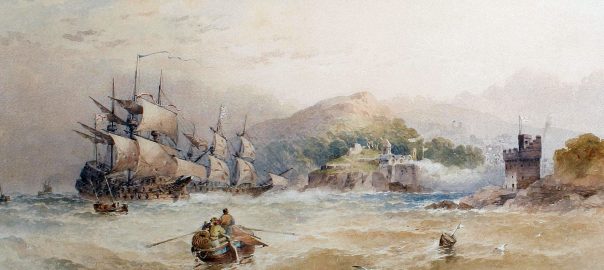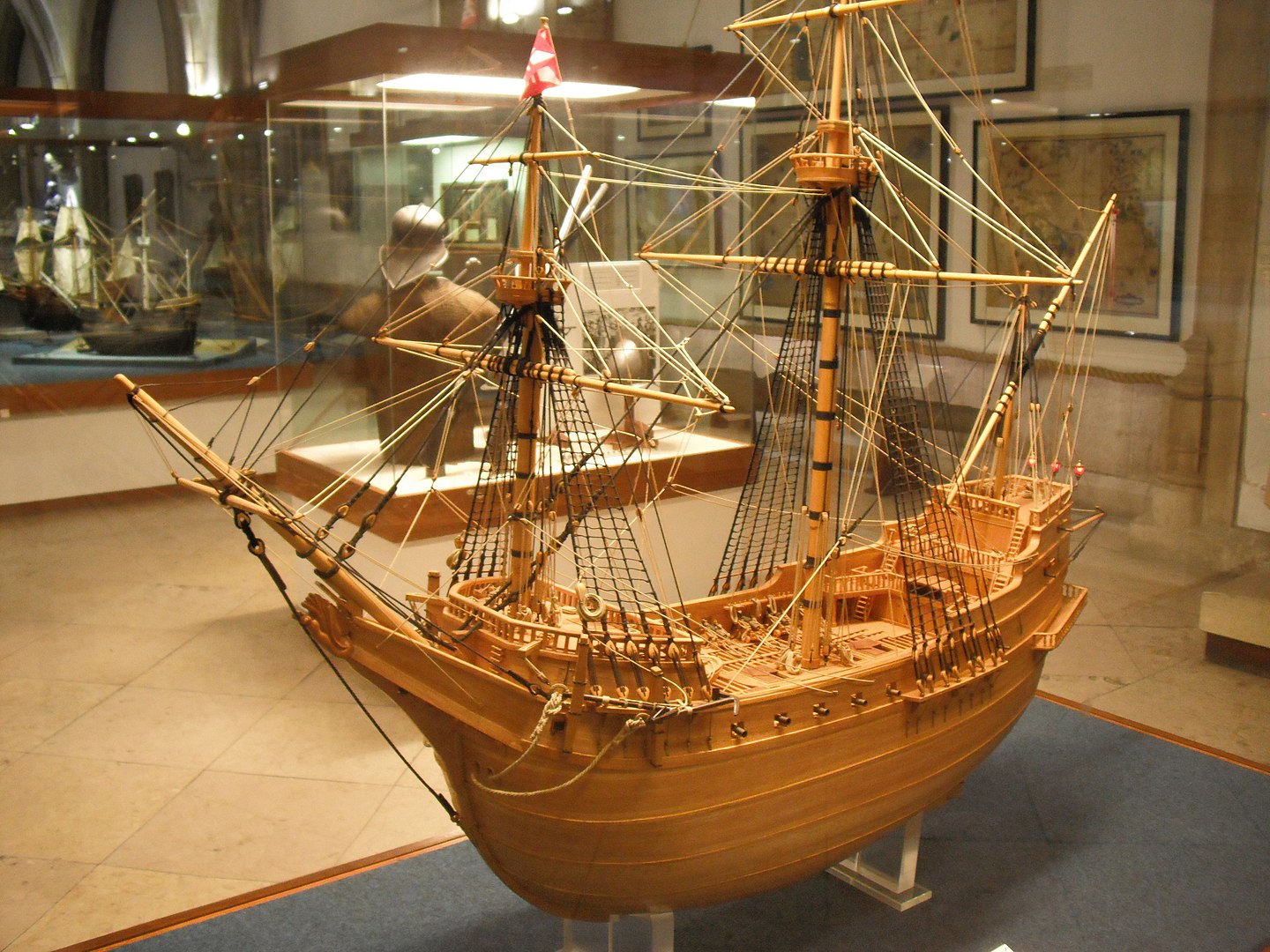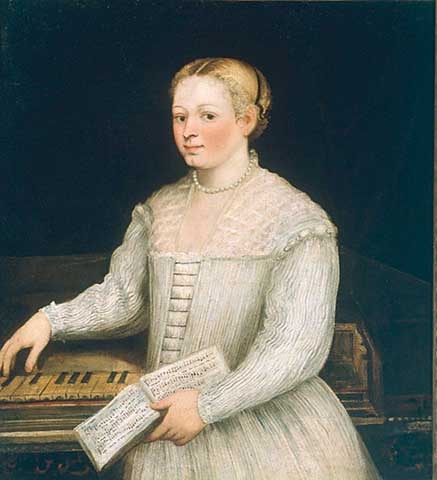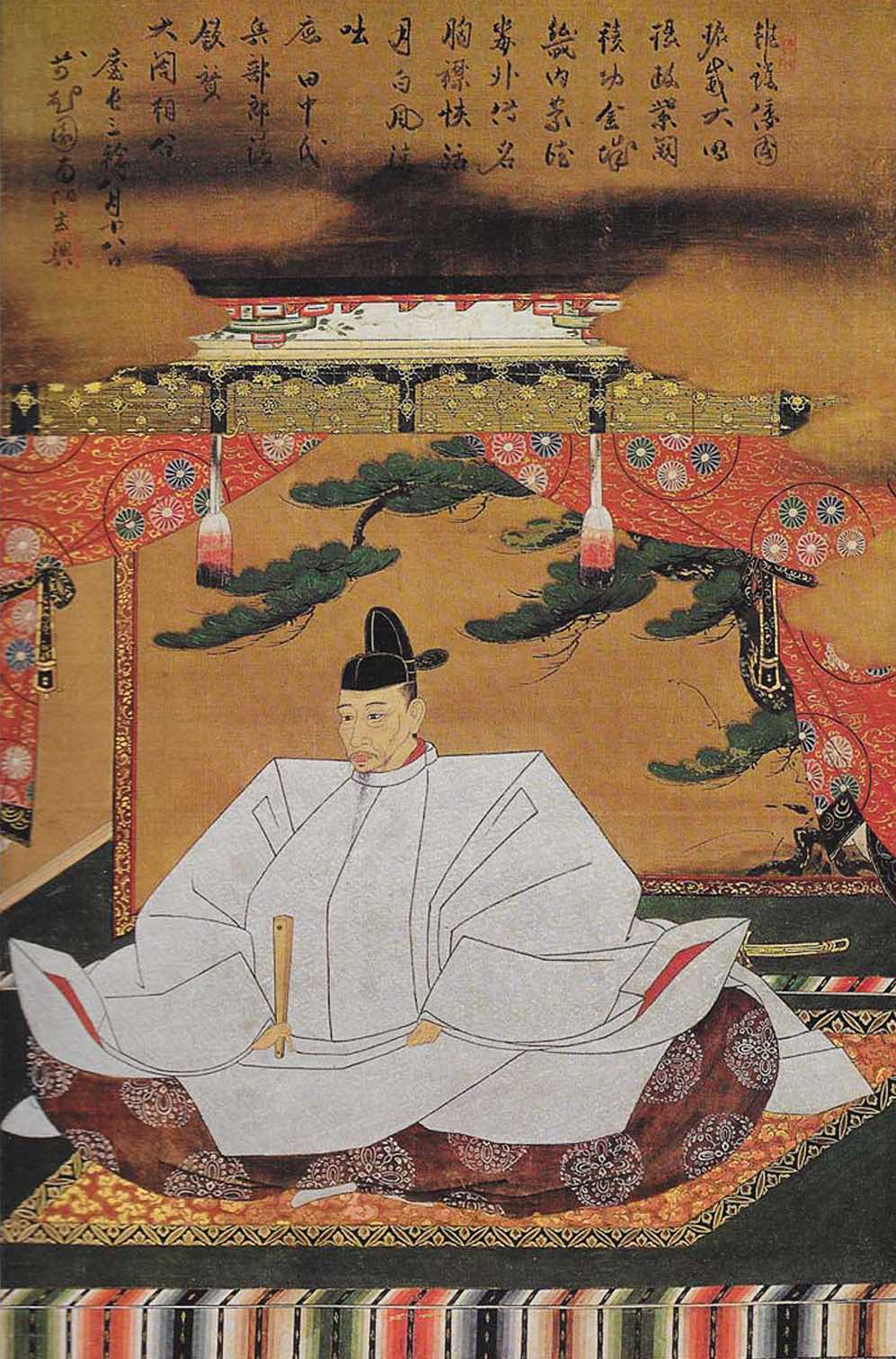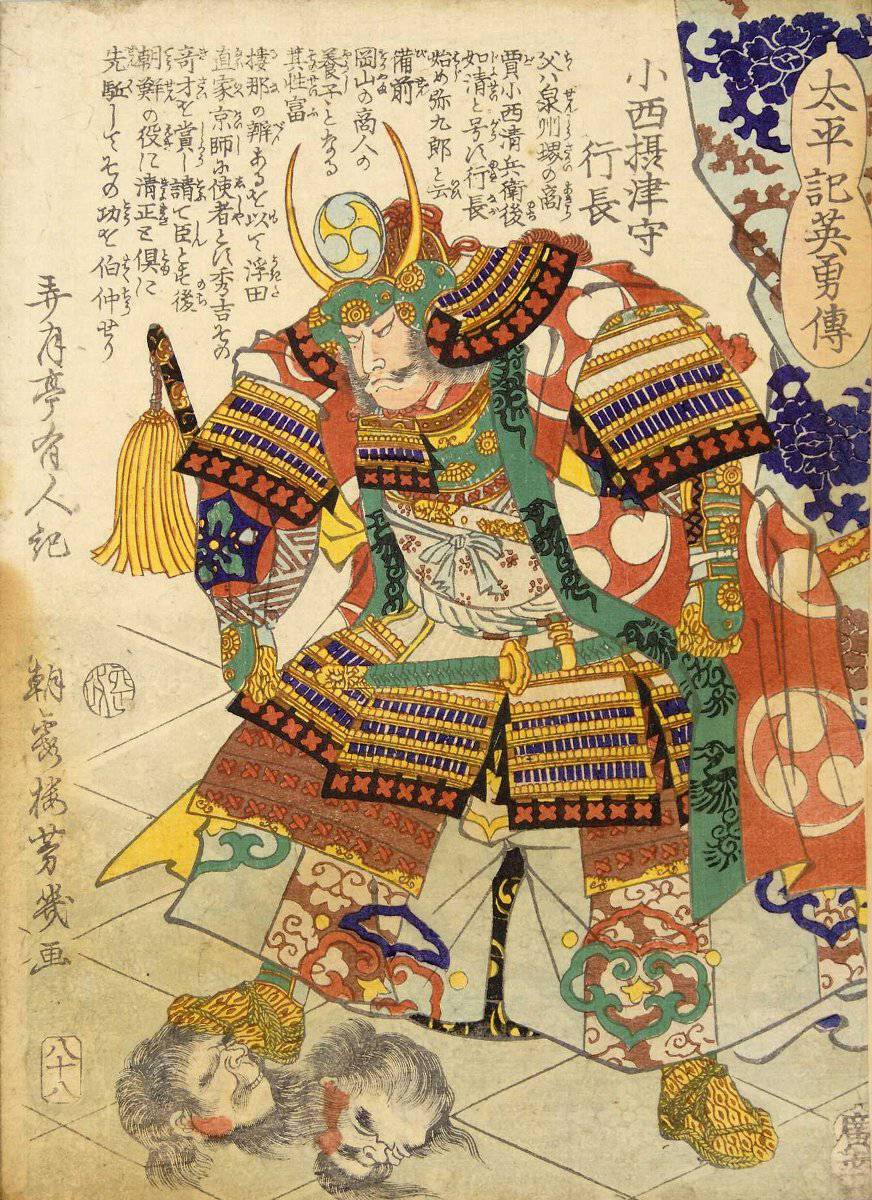We’ll start with the Spanish Empire. Then, scroll on down to learn about two very successful English plunder-raids; about a German women printer who died in 1592; and about Japan launching a big invasion of Korea that year.
It’s the centennial of Columbus’s first contact with the “New World”! How better could those rapacious, globe-girdling bands of conquistadors known as the “Spanish Empire” celebrate than by founding a new settler-city, San Luis Potosí, in the heart of “New Spain” (today’s Mexico)?
The area was called “Potosí” in the hope that its mineral wealth would rival that of the Potosí area of Bolivia. That hope was never realized. But no matter, the massive Spanish settler-colonial project in “New Spain” and most of Central and South America continued undaunted.
Down in Chile, meanwhile, the Spanish governor, Alonso de Sotomayor, was facing challenges both from the still-resisting Mapuche and from a feisty small English naval contingent that had sailed up from the south and was harassing his communications. In July 1592, Sotomayor left to go see the Spanish viceroy in Peru to plead for more reinforcements. All in a year’s work!
English naval expeditions continue
In 1591, investors in the various joint-stock companies in London formed to finance rapacious (“privateering”, or more accurately, “plunder-for-profit”) expeditions in various of the world’s oceans saw decidedly mixed returns on their investments. In 1592, a couple of these expeditions proved far more profitable.
The first of these was the raid the English boat Amity of London made on two Spanish galleons in the Alboran Sea portion of the Mediterranean, just east of the Straits of Gibraltar. Amity was described as a “powerfully armed 100 ton armed merchant galleon”. It was returning back to London with the goods the captain, Thomas White, had traded for in some Ottoman-controlled ports, when he saw ahead of him two much larger Spanish galleons. White and his men were able to fire the Amity‘s cannons “broadside” against the Spanish ships, damaging one of them below the water-line so it started sinking. (It seems he was able to come in underneath the cannons placed much higher on the Spanish ships.)
After five hours of fighting he had captured both ships, having killed or captured 213 Spaniards. He and his men took the “prizes” (the fully laden Spanish ships) back to London, amid much rejoicing.
English-WP:
The Spanish vessels had been laden with fourteen hundred chests of Quicksilver (Mercury), a hundred tons of wine and an immense haul of papal bulls. Also captured were at least 500 iron muskets and arquebuses. Prize money was high too; over £700,000 worth which was shared with the crew and the owners and a large share to Queen Elizabeth I.
The mercury was a big loss to the Spain’s King Philip II, who had been planning to use it to extract silver from the lucrative mines in “New Spain.” The papal “bulls”, were simply signed and sealed documents the Pope had provided to the Spanish granting them various privileges. They were useless to the English, who didn’t recognize papal authority– but they had cost Philip 300,000 Florins and he could have sold them for an estimated 5,000,000 florins.
The second very successful sea-raid launched by British investors in 1592 was in the Azores, which had seen a very unsuccessful attempt to raid the Spanish Treasure Fleet the previous year. This expedition was known as the Battle of Flores (1592) or the Capture of the Madre de Deus.
This expedition was larger and better planned than the expedition sent to the Azores in 1591. This time, a total of 16 English vessels were involved, and the naval battles lasted for over three months. The English fleet was initially led by Walter Raleigh, and later by Martin Frobisher and John Burrough. When the fighting ended, the English had destroyed one Portuguese “carrack” (a very large ship filled with treasure hauled around the cape from Portuguese trading stations in the Indian Ocean)– but they had captured intact another large carrack , the Madre de Deus,and a galleon and had killed, wounded or captured around 1,000 Portuguese seamen.
English-WP tells us:
As the fleet sailed back to England, Burrough produced an inventory – the report mentions:”Gods great favor towards our nation, who by putting this purchase into our hands hath manifestly discovered those secret trades & Indian riches, which hitherto lay strangely hidden, and cunningly concealed from us“.
Among these riches were chests filled with jewels and pearls, gold and silver coins, ambergris, bolts of the highest-quality cloth, fine tapestries, 425 tons of pepper, 45 tons of cloves, 35 tons of cinnamon, 3 tons of mace and 3 of nutmeg, 2.5 tons of benjamin (a highly aromatic balsamic resin used for perfumes and medicines), 25 tons of the precious red dye cochineal and 15 tons of ebony.
An inventory was taken, that also listed many fine textiles from China and elsewhere; “muske, civet, and amber-griece”; “elephants teeth, porcelain vessels of China, coco-nuts, hides”, etc.
Crucially, for the English navigators, there was also a “rutter”– which was the “route-book” or log the experienced Portuguese captains would keep, that listed in detail the best maritime approaches to all the ports they would sail to. Rutters were the highest-value and most securely guarded intellectual property of their day– and now the English had captured this one!
The haul also included, “a document, printed at Macau in 1590, containing valuable information on the China and Japan trade, that had been “enclosed in a case of sweet Cedar wood, and lapped up almost an hundredfold in fine Calicut-cloth, as though it had been some incomparable jewel.” (Which of course, it was.)
When the captain brought the Madre de Deus into the harbor in Dartmouth, Devon, it towered over all the other ships there, and the little port’s houses, too:
Nothing like Madre had ever been seen in England – the frame from the beakhead to the stern was 165 feet long. The breadth at the broadest deck, was just over 46 feet and her draft was twenty-six feet at her arrival in Dartmouth. Her several decks; consisted of a main orlop, three main decks, and a forecastle and a spar deck of two floors each. The length of the keel was 100 feet, the main-mast was 121 feet, and its circumference at the partners was just over ten feet. The main-yard was 106 feet long
(The banner image above is a painting of the Madre de Deus approaching Dartmouth.)
As it neared the port, however, it was already subjected to considerable, serious looting by the seamen, who disembarked and scattered with their (now twice-looted) booty. Queen Elizabeth sent Raleigh to restore order. By the time he did so,
a cargo estimated at half a million pounds nearly, almost half the wealth of the English treasury at the time and perhaps the second-largest treasure ever after the Ransom of Atahualpa, had been reduced to £140,000. Still, ten freighters were needed to carry the treasure around the coast and up the River Thames to London. In all the expedition as a whole yielded Elizabeth a 20-fold return on her investment.
The rutter and the trading-secrets document captured with the Madre de Deus laid the basis for the formation by London investors a few years later of the infamous “East India Company”.
Katharina Gerlachin, a printer in Nuremberg
As I go through English-Wikipedia’s year-by-year listings of significant world events, I frequently scry the lists of people who have died that year to look for interesting women. It is pretty soul-destroying. Of the 20% or fewer of the “significant” deaths recorded that are recognizably of females, nearly all are of women famous primarily for their marital status: the “Countess of This”, the “Duchess of That”, or female consorts of various monarchs, or whatever. Sometimes there are more interesting descriptions: “executed for witchcraft” was one memorable one.
Anyway, today I found this listing for Katharina Gerlachin, who died in 1592. Born Katharina Bischoff in 1520, she had married one Nicolas Schmid in 1536, having a daughter with him named Katharina in 1539. He died in 1540, and a year later, as Catherina Schmidin, she married Johann vom Berg.
In 1542, vom Berg would found a printing business, Berg & Neuber, jointly with Ulrich Neuger. In 1545, Katharina had a second daughter, Veronica. Vom Berg died in 1563; and thereafter she married his junior partner Dietrich Gerlach. (Does an interesting tale lie therein?) From 1564 until 1568, the company’s prints appeared under the name of Gerlach & Neuber. In 1568, Neuber dissolved the partnership and opened his own shop. This presumably left Gerlach in charge of his business. Was Katharina, his wife, a full partner or just an assistant? But after Gerlach died in 1575, she continued to sign as printer until her death in 1592. Ownership of the printing workshop passed to her grandson Paul Kauffmann in 1601.
What they were printing, by the way, was mainly sheet music.
Yay, Katharina!
(I had also found two accomplished women listed as having died in 1590. These were: Maddalena Casulana (c. 1544 – c. 1590), who was an Italian composer and lutenist who was the first female composer to have had a whole book of her music printed and published in the history of western music. Maybe printed by Katharina, who knows? And: Marietta Robusti (1560? – 1590), who was a Venetian painter and the daughter of Tintoretto– sometimes referred to as Tintoretta.)
Japanese invade Korea!
Well, back to some pretty toxic masculinity here…
Remember how way back when, the Portuguese had introduced some “modern” musket/arquebus technology to various warlords in Japan who had then set up their own gun-manufacturing plant? 1592 was the year that Toyotomi Hideyoshi (豊臣 秀吉), a Japanese samurai regarded as the second “Great Unifier” of Japan, invaded the Korean Peninsula “with the intent of conquering… Korea and eventually Ming-dynasty China.”
Greater East Asian Co-Prosperity Zone, anyone?
Here’s what we learn from what looks like an extremely thorough and detailed page on English-WP about the opening months of this war, which would eventually drag on for six years:
In 1592, with an army of approximately 158,000 troops, Toyotomi Hideyoshi launched what would end up being the first of two invasions of Korea, with the intent of conquering Joseon Korea and eventually Ming-dynasty China. Initially, the Japanese forces saw overwhelming success on land, capturing both Hanseong, the capital of Korea, and Pyongyang, and completing the occupation of large portions of the Korean Peninsula in three months. The Japanese forces, well-trained, confident, and experienced after the numerous battles and conflicts of the Sengoku period, typically held the field in most land engagements. This success on land, however, was constrained by the naval campaigns of the Korean navy which would continue to raid Japanese supply fleets in its coastal waters, hampering the Japanese advances as supply lines were disrupted along the Western Korean coast and Japanese naval reinforcements were repelled. These trends, with some exceptions on both sides, held true throughout much of the conflict.
Under the rule of the Wanli Emperor, Ming China quickly interpreted the Japanese invasions as a challenge and threat to the Imperial Chinese tributary system. The Ming’s interest was also to keep the war confined to the Korean peninsula and out of its own territory (to avoid territorial destruction); they entered into the conflict by dispatching reinforcements to attack from the north. In the engagements that followed, the majority of the Joseon [Korean] army was focused on defending the northern provinces from Japanese offensives, while also supporting Ming army campaigns to recapture territory occupied by the Japanese. Consequently, it was the combination of these Ming-led land campaigns and Joseon-led naval warfare that eventually forced the Japanese army to withdraw from Pyongyang to the south, where the Japanese continued to occupy Hanseong and the southern regions with the exception of the southwestern Jeolla Province
Interestingly, English-WP also tells us that, “In 1585, Hideyoshi told the Portuguese Jesuit Father Gaspar Coelho of his wish to conquer all of East Asia. Hideyoshi asked Coelho to send a message to his master, King Philip II of Spain, who was also King Philip I of Portugal, asking that he make his navy available to help Japan (Ming China, Spain, and Portugal were the main naval powers of the time). However Philip refused Hideyoshi, preferring not to upset China.“
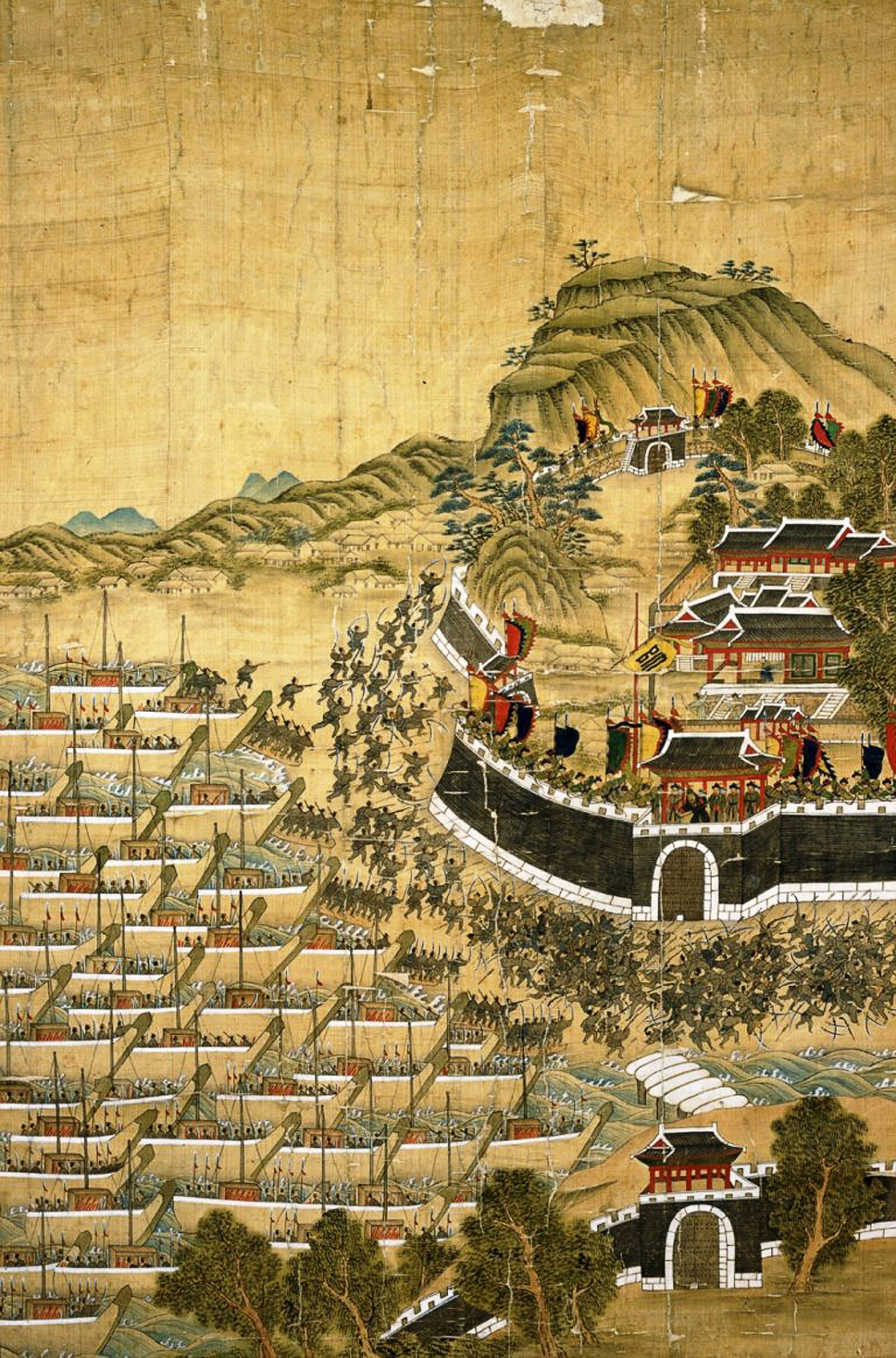
The Japanese landing at Busan 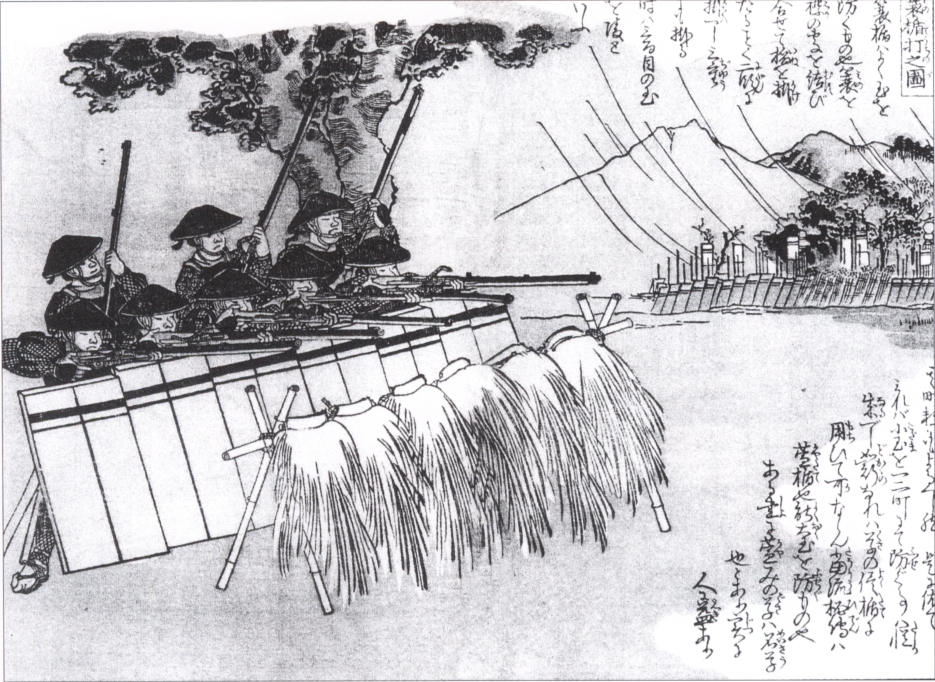
Japanese using Tanegashima matchlocks 
Amulliform Chinese fire-lance, shoots a blast of flame with lead pellets 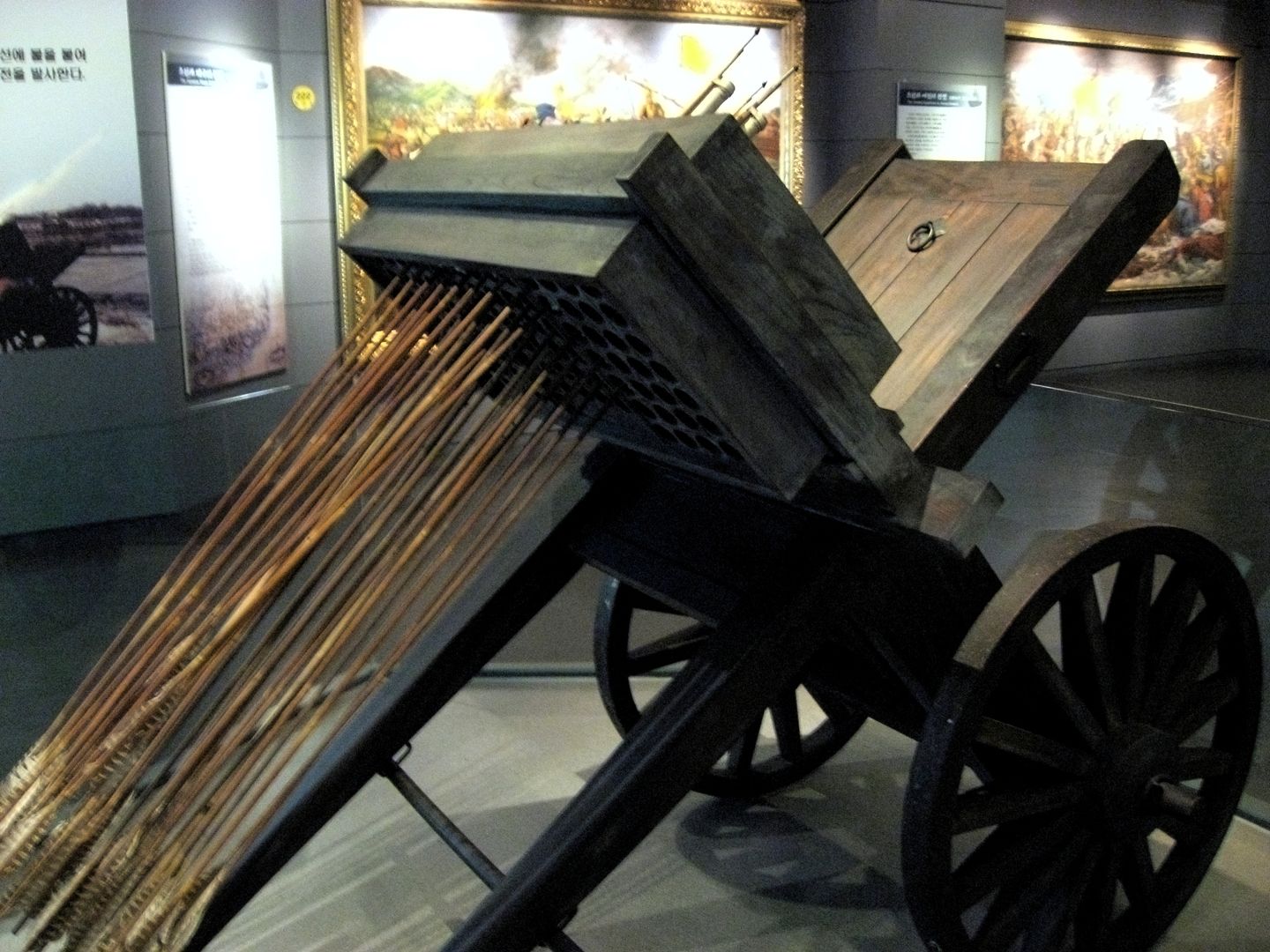
Joseon’s multiple rocket-powered arrow launcher 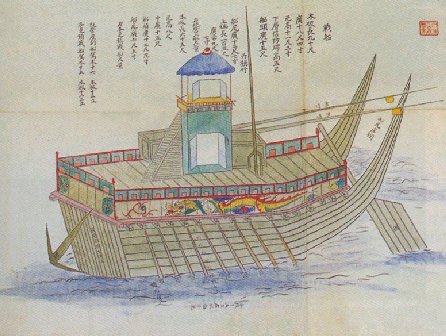
Painting of a Korean panokseon
